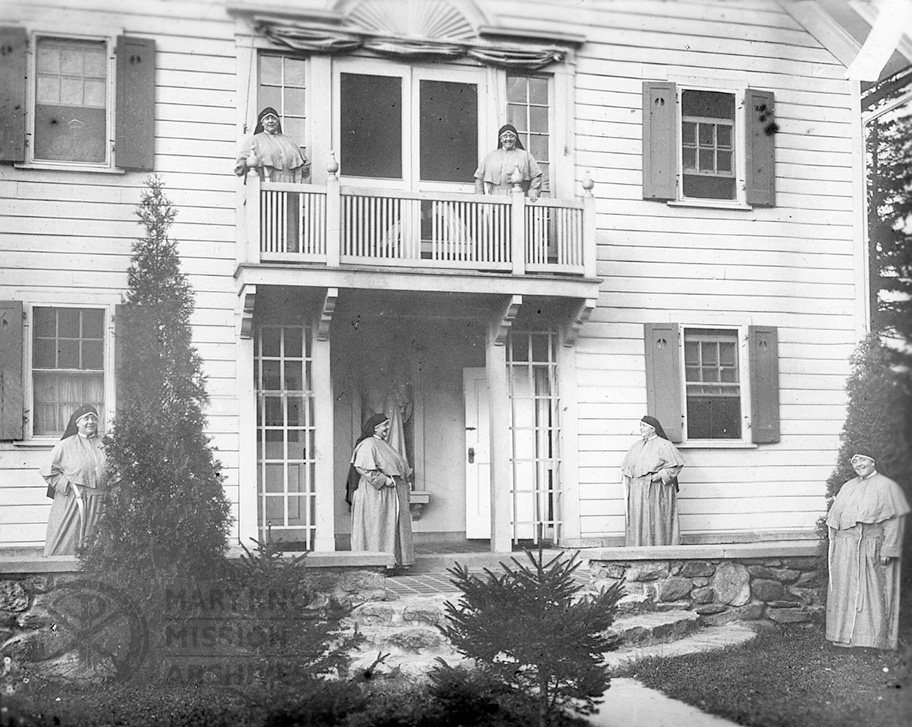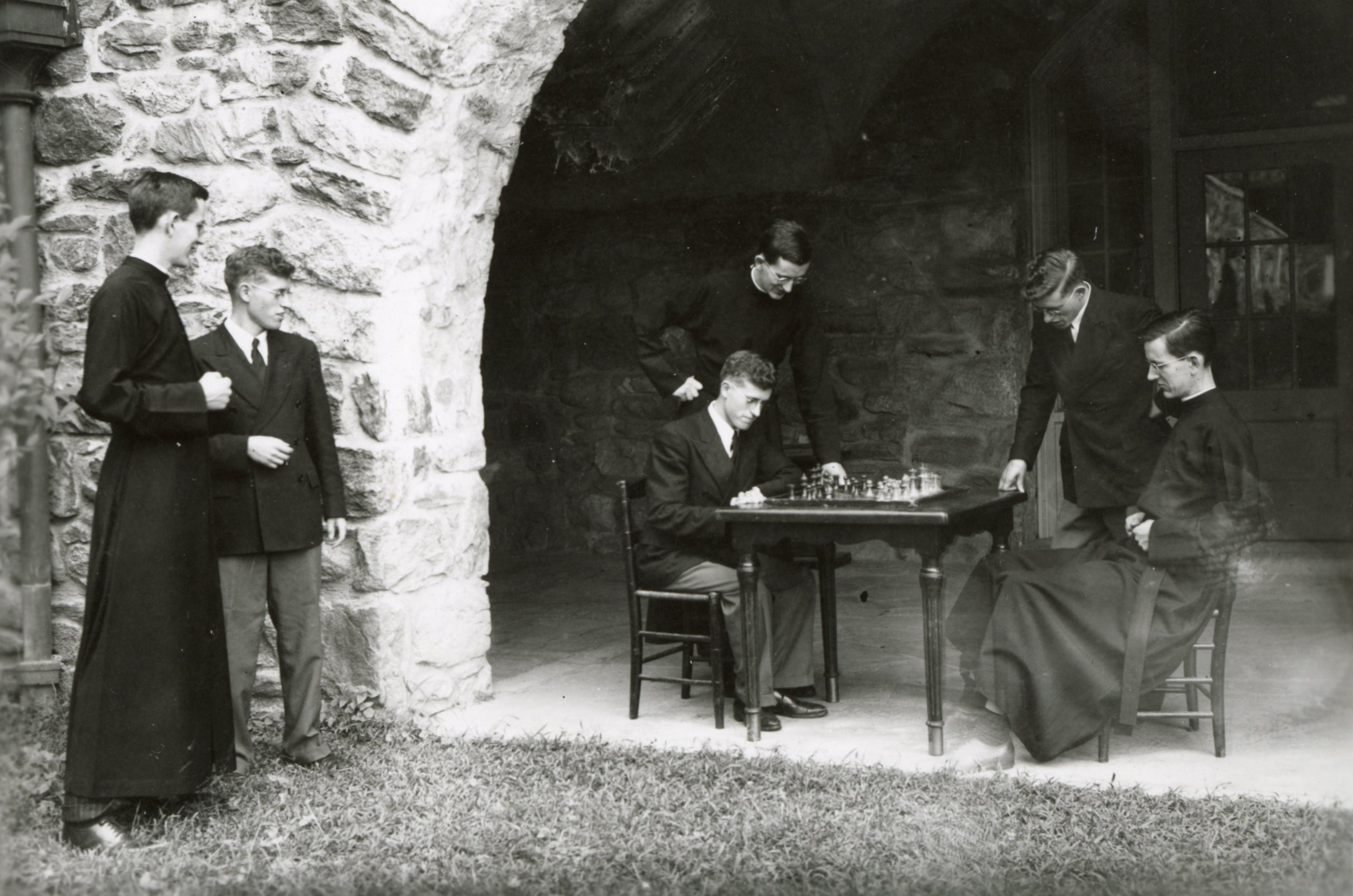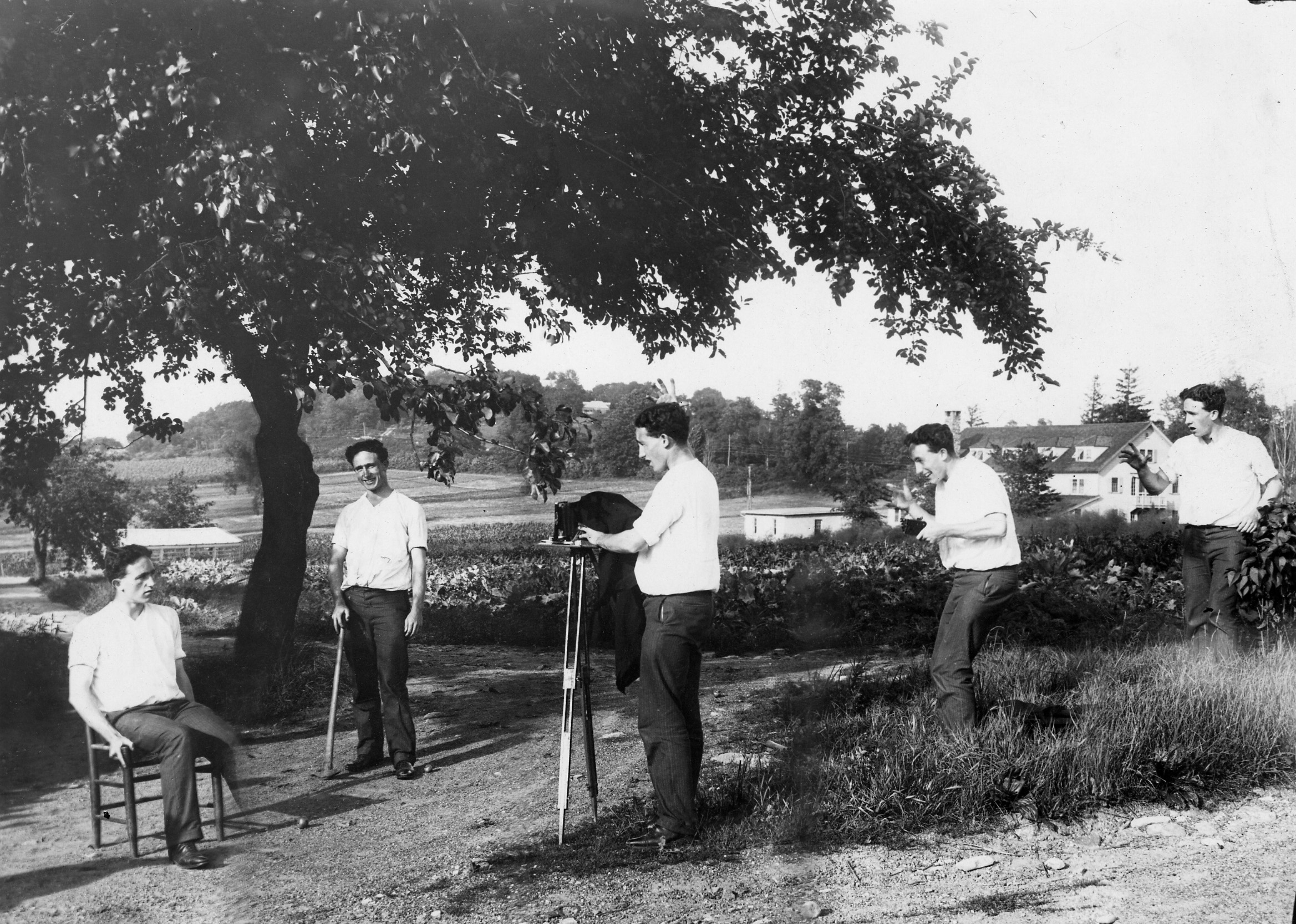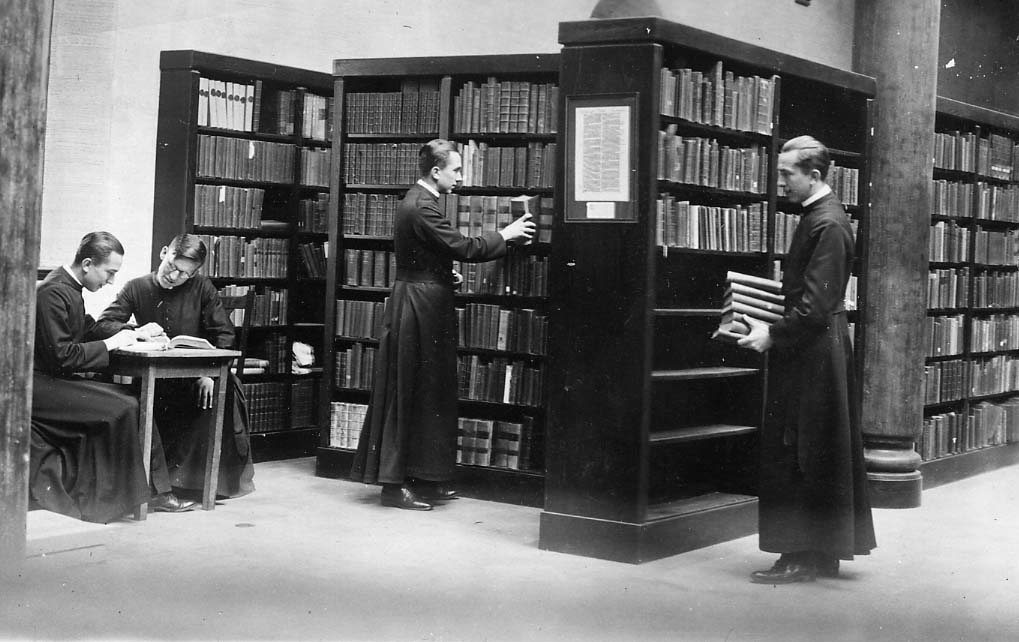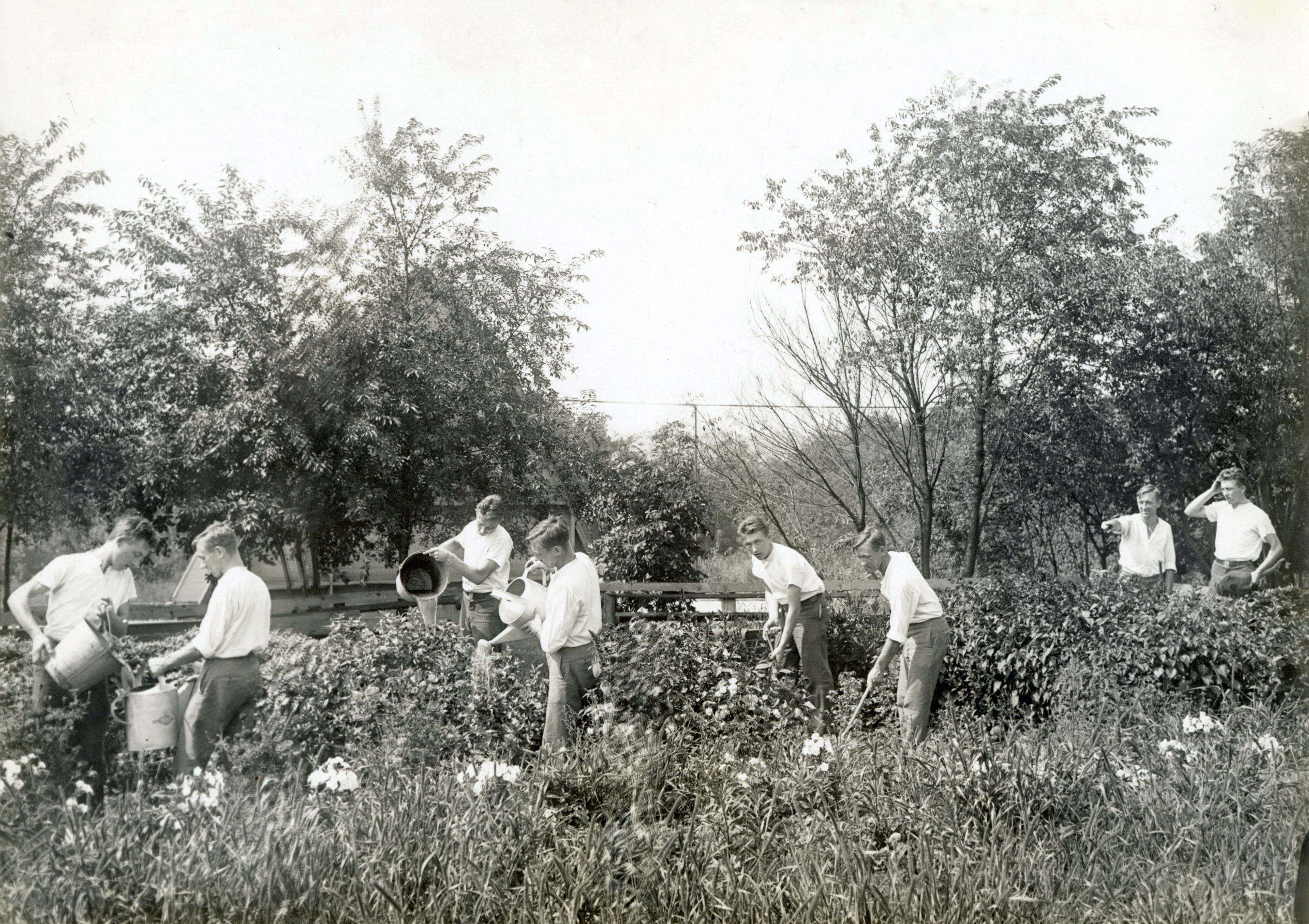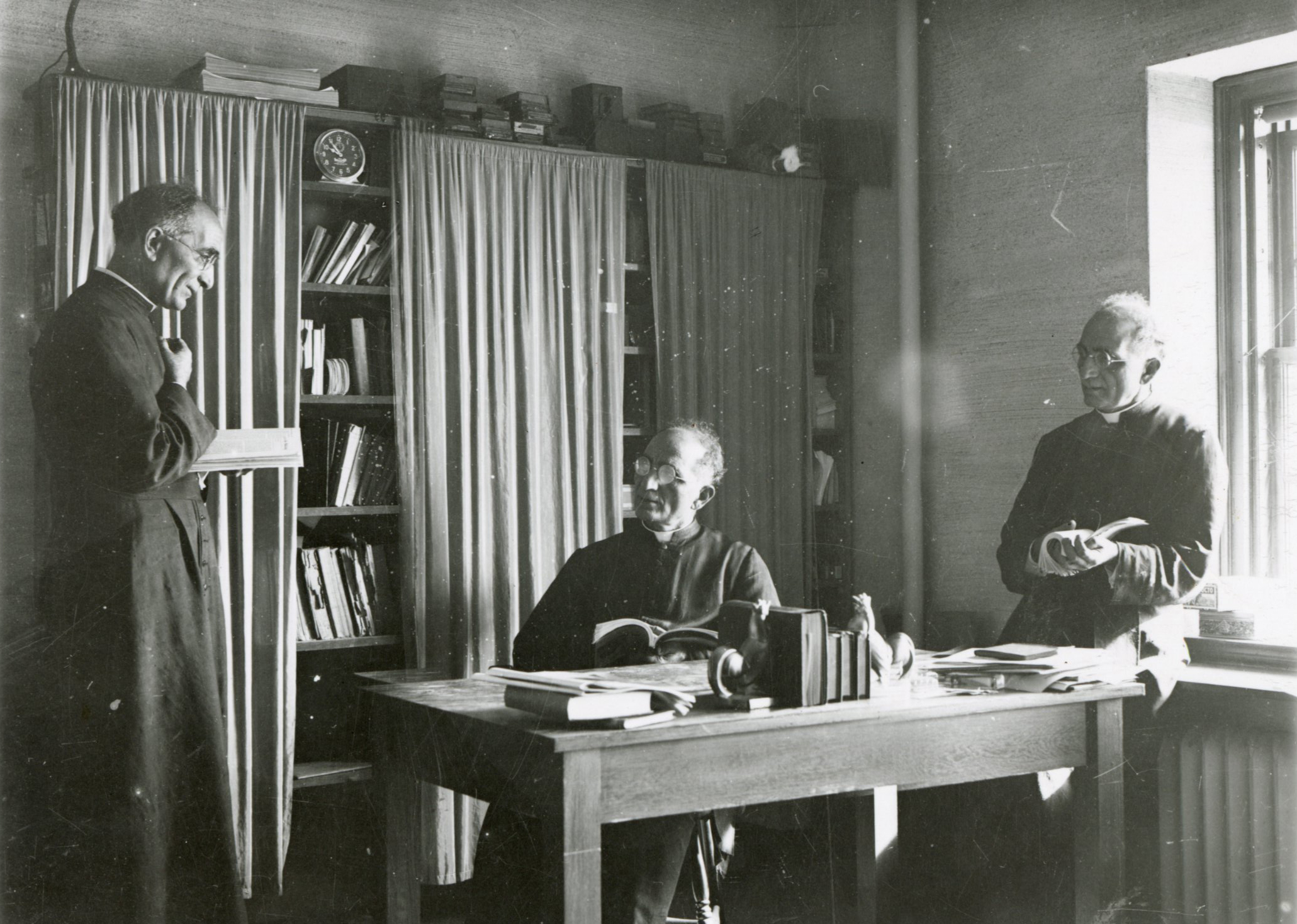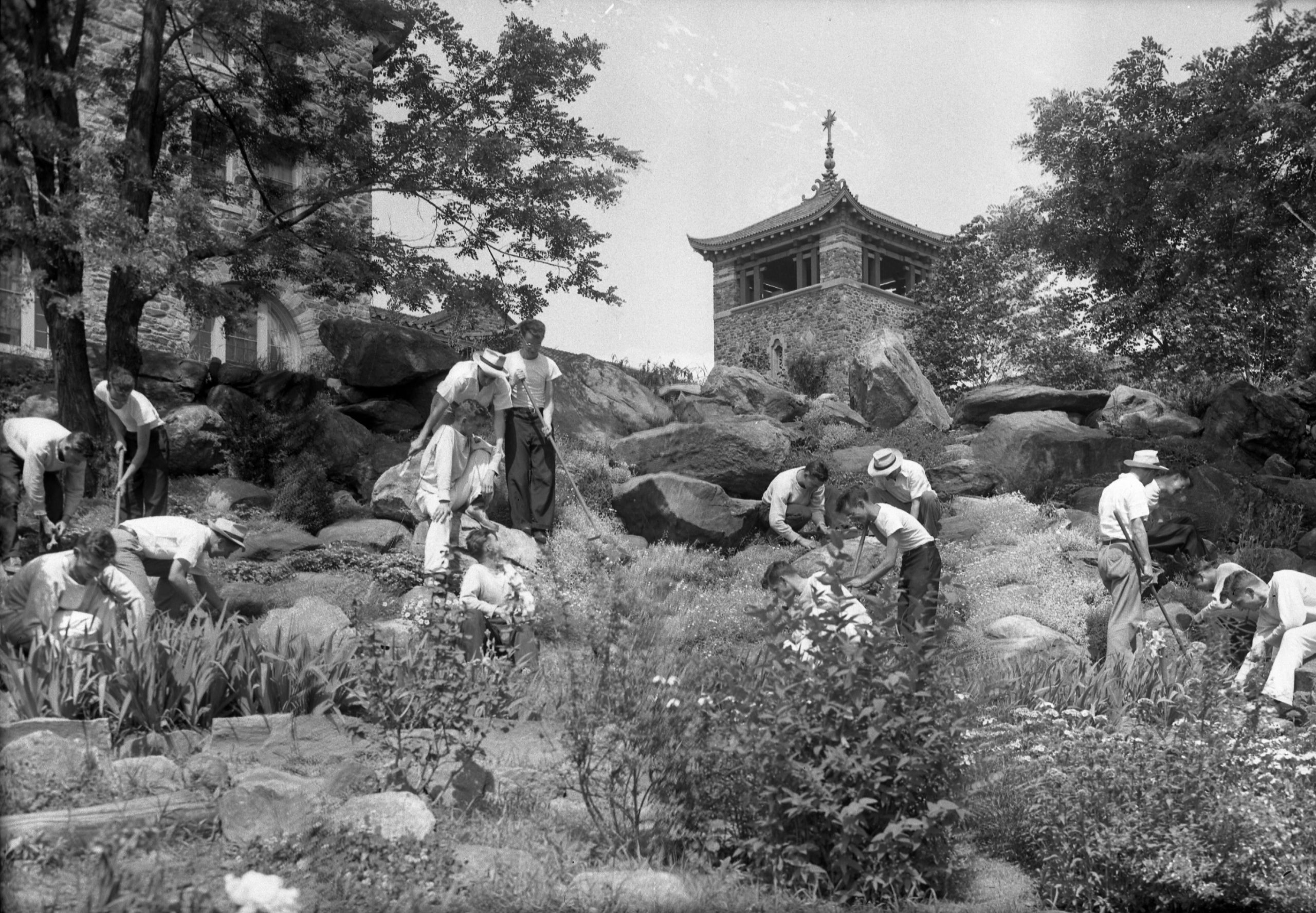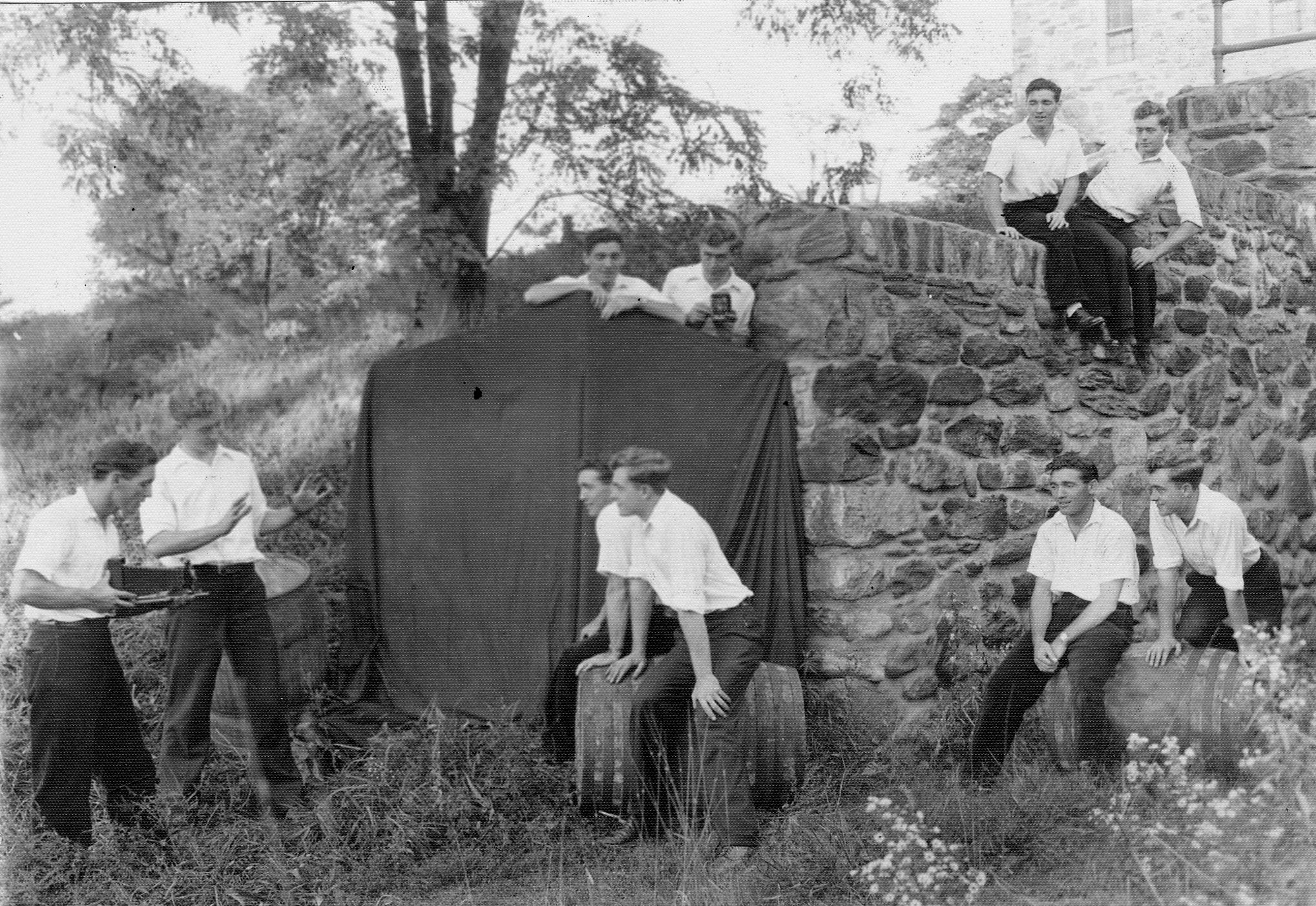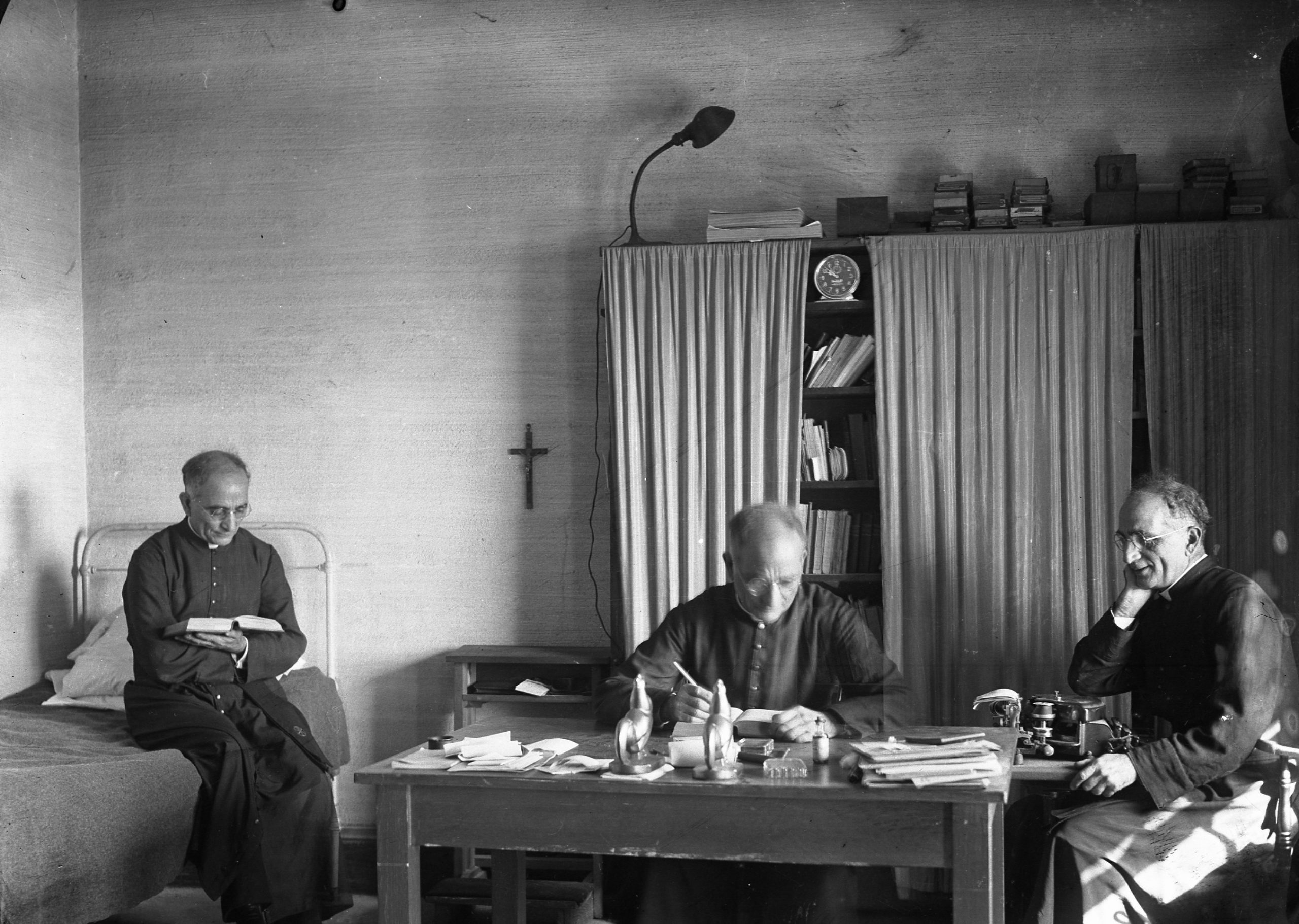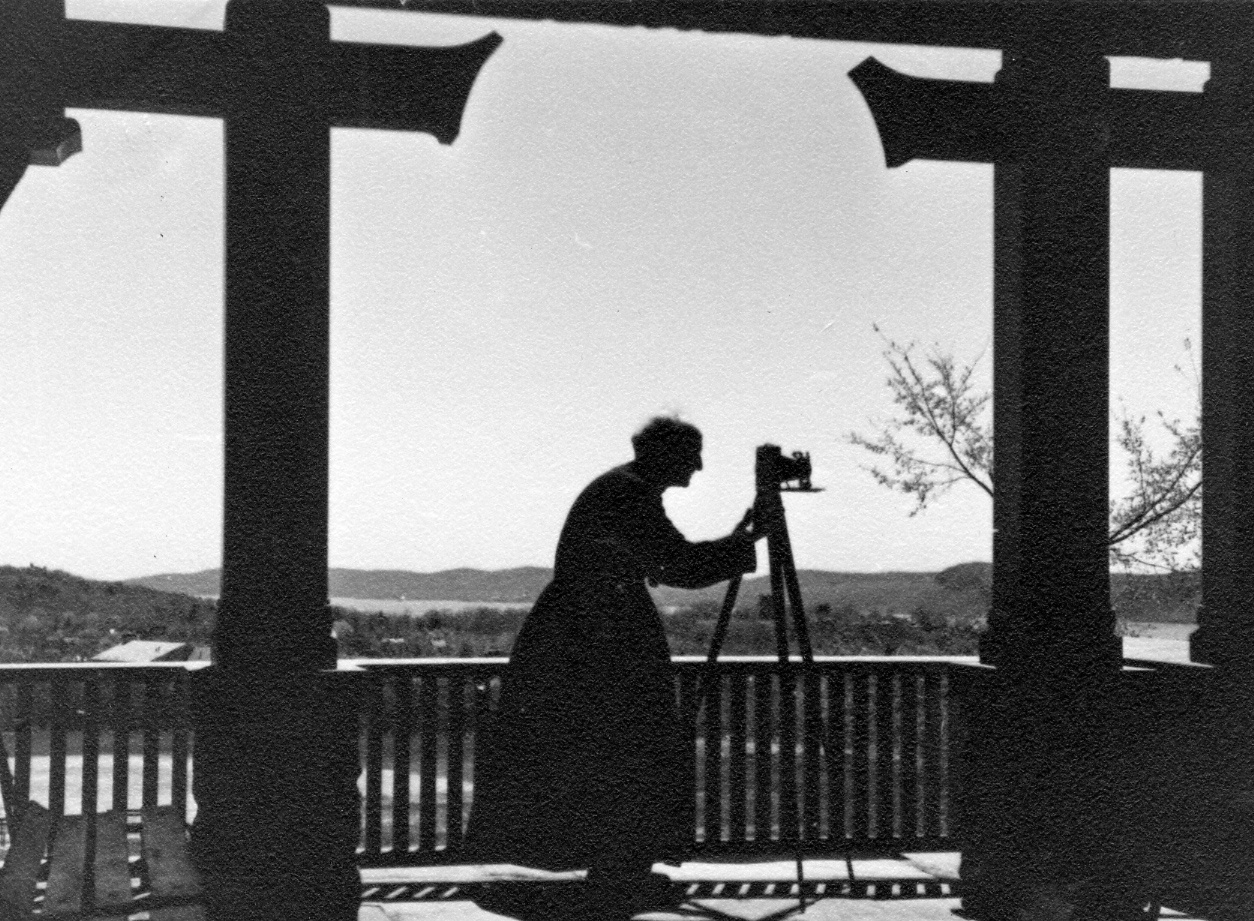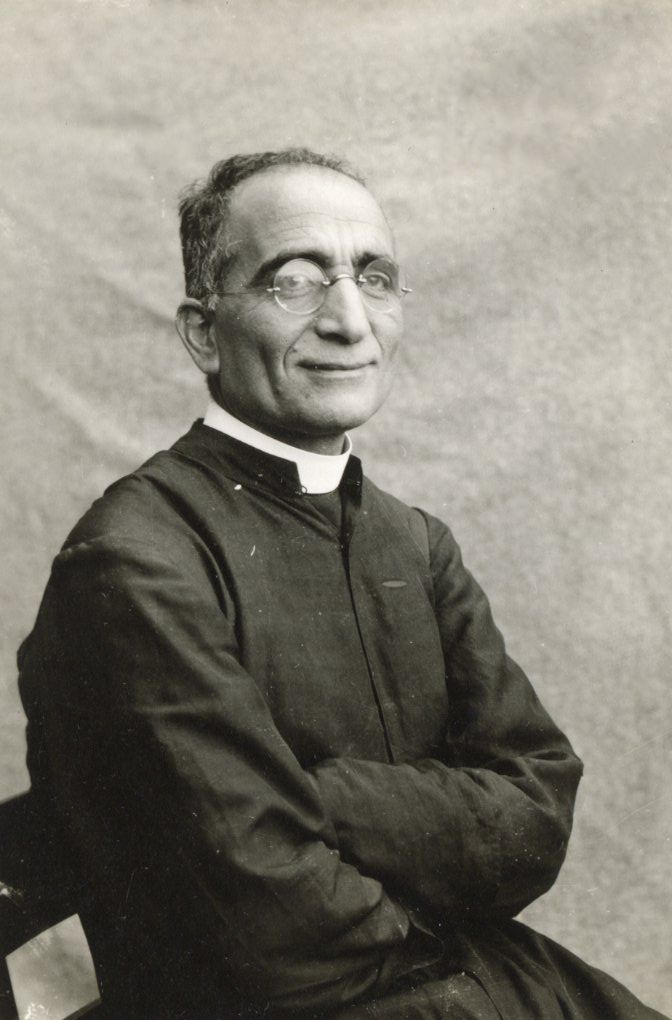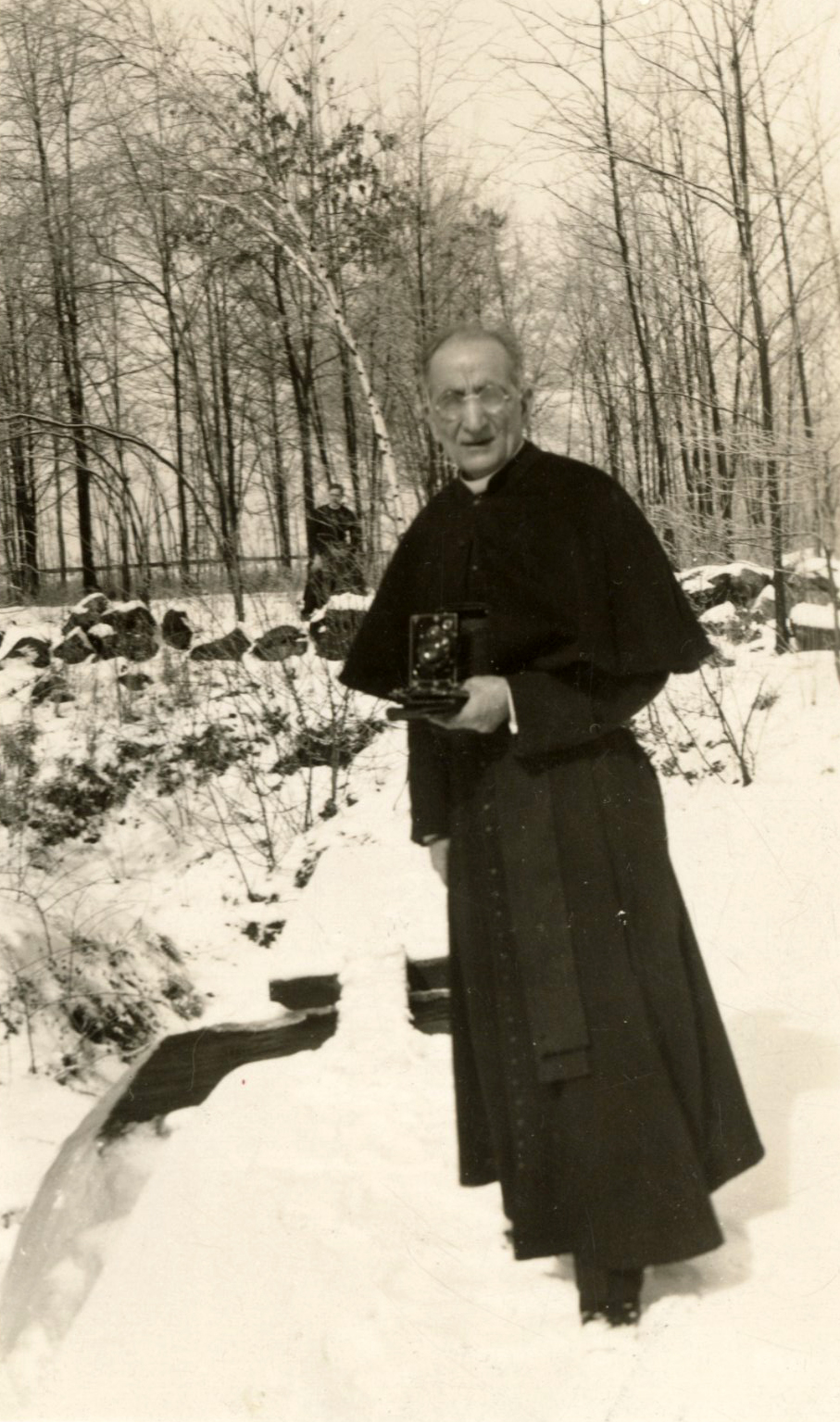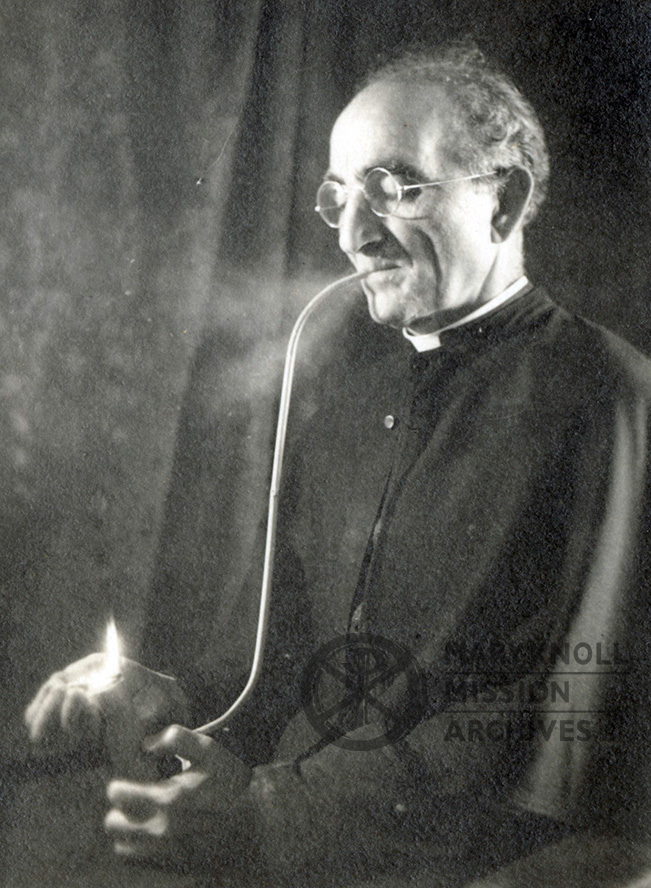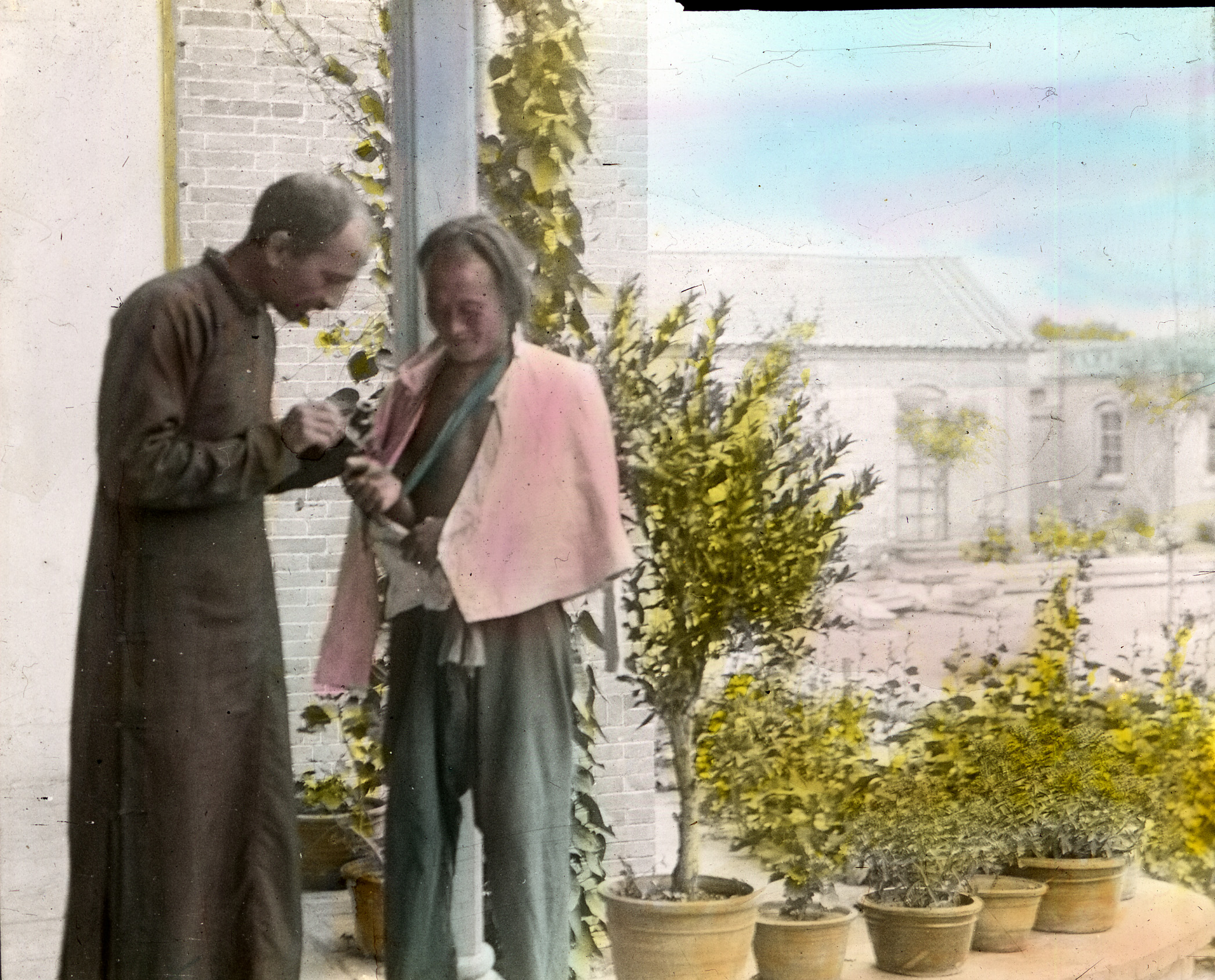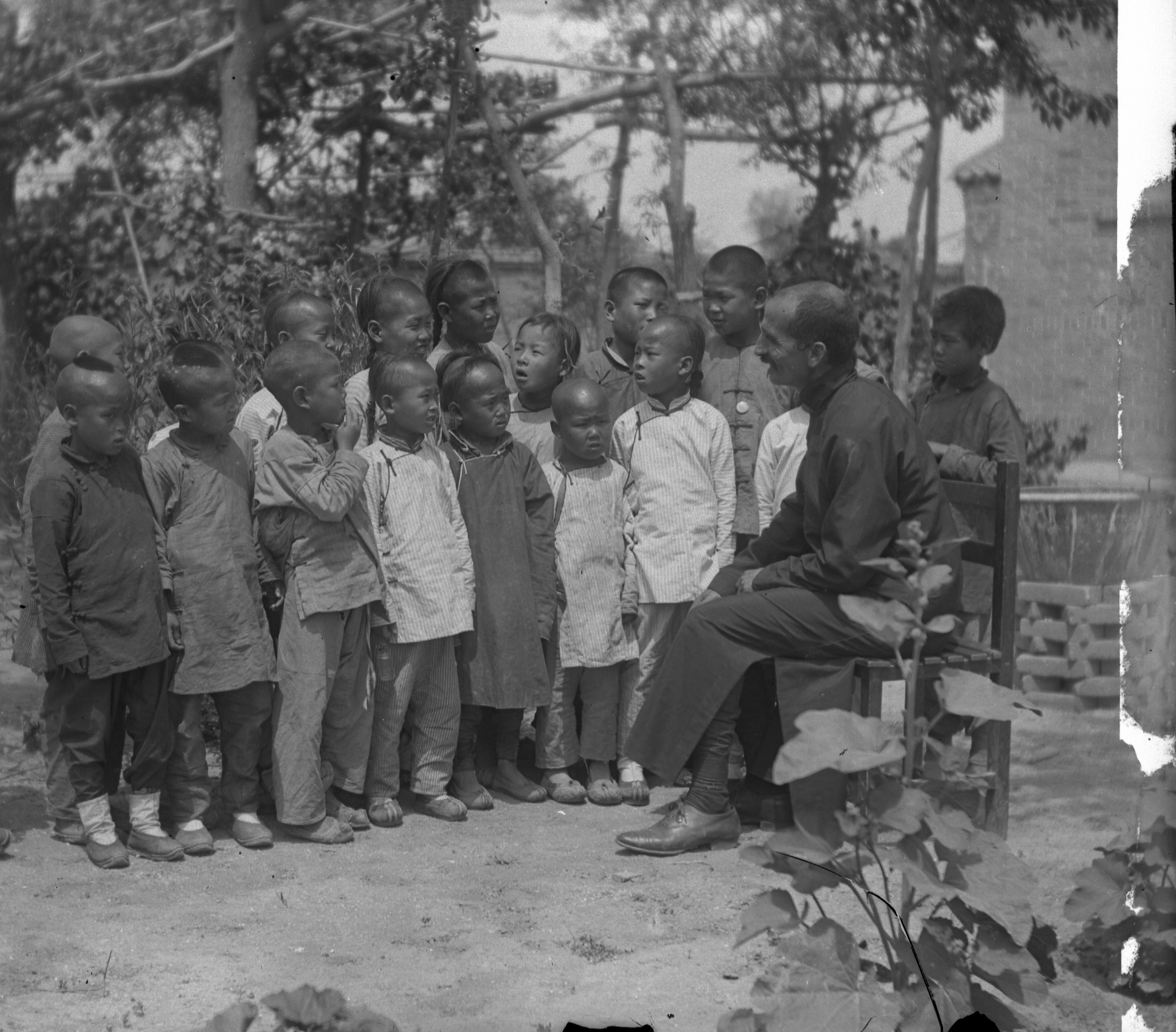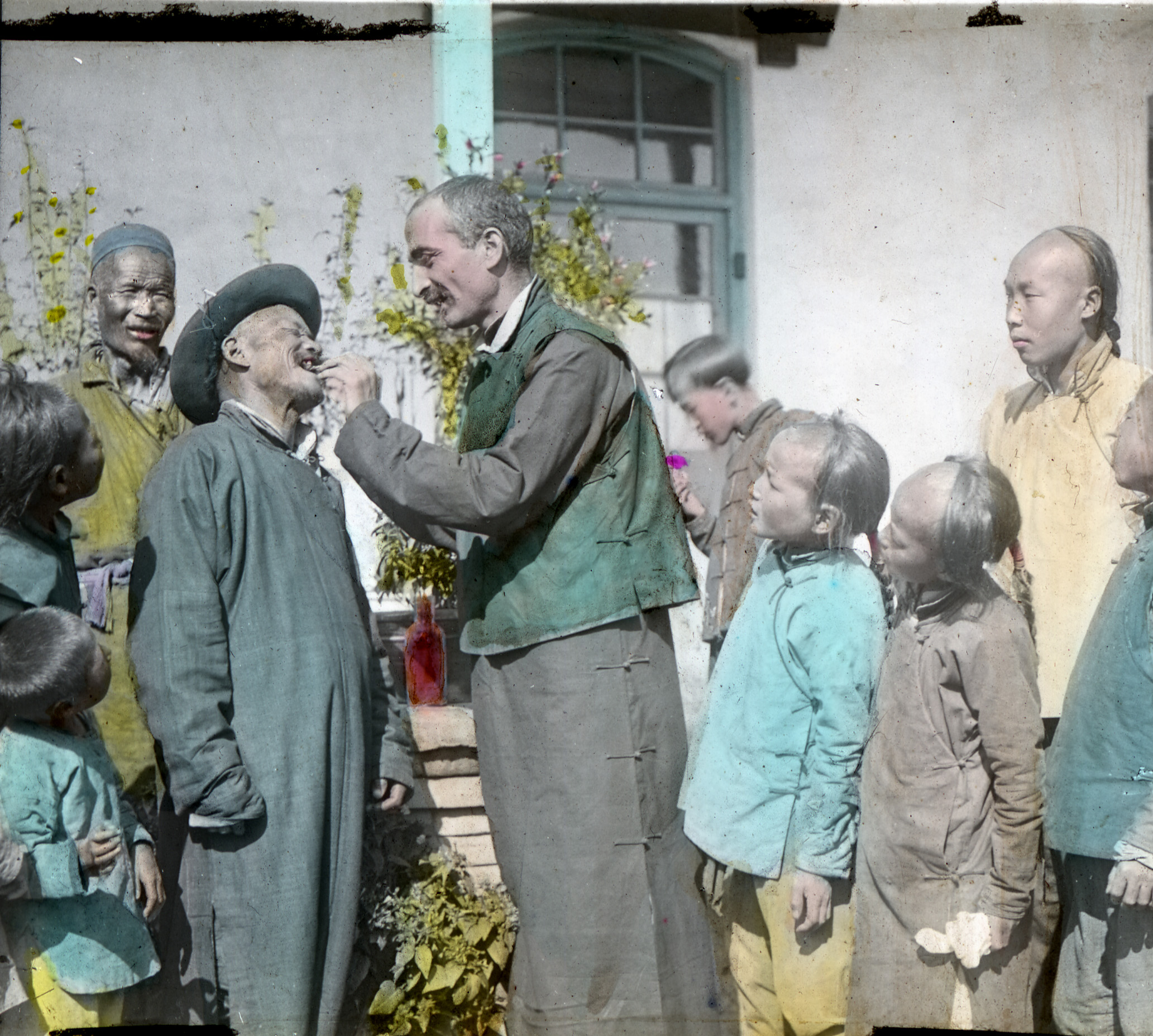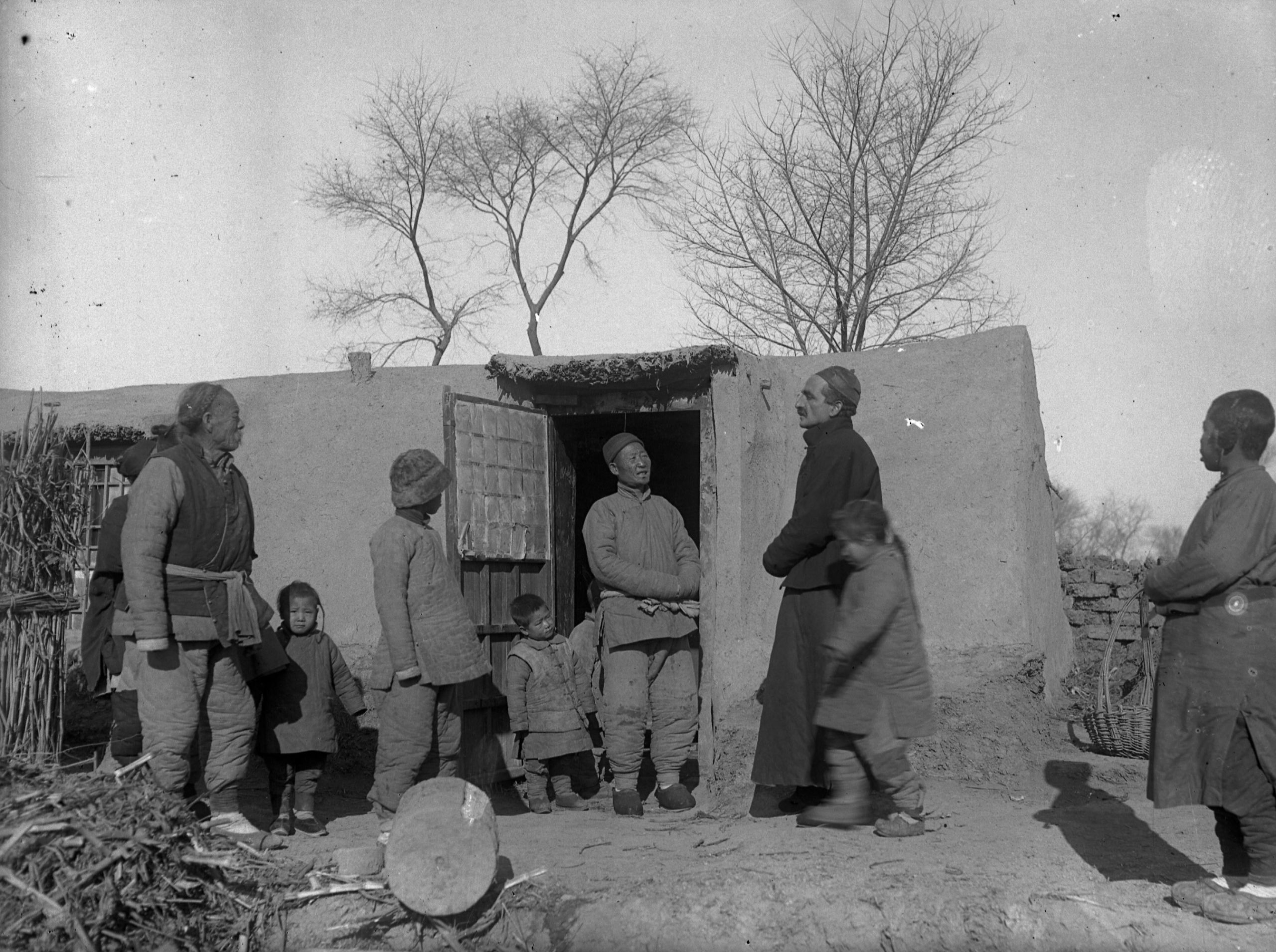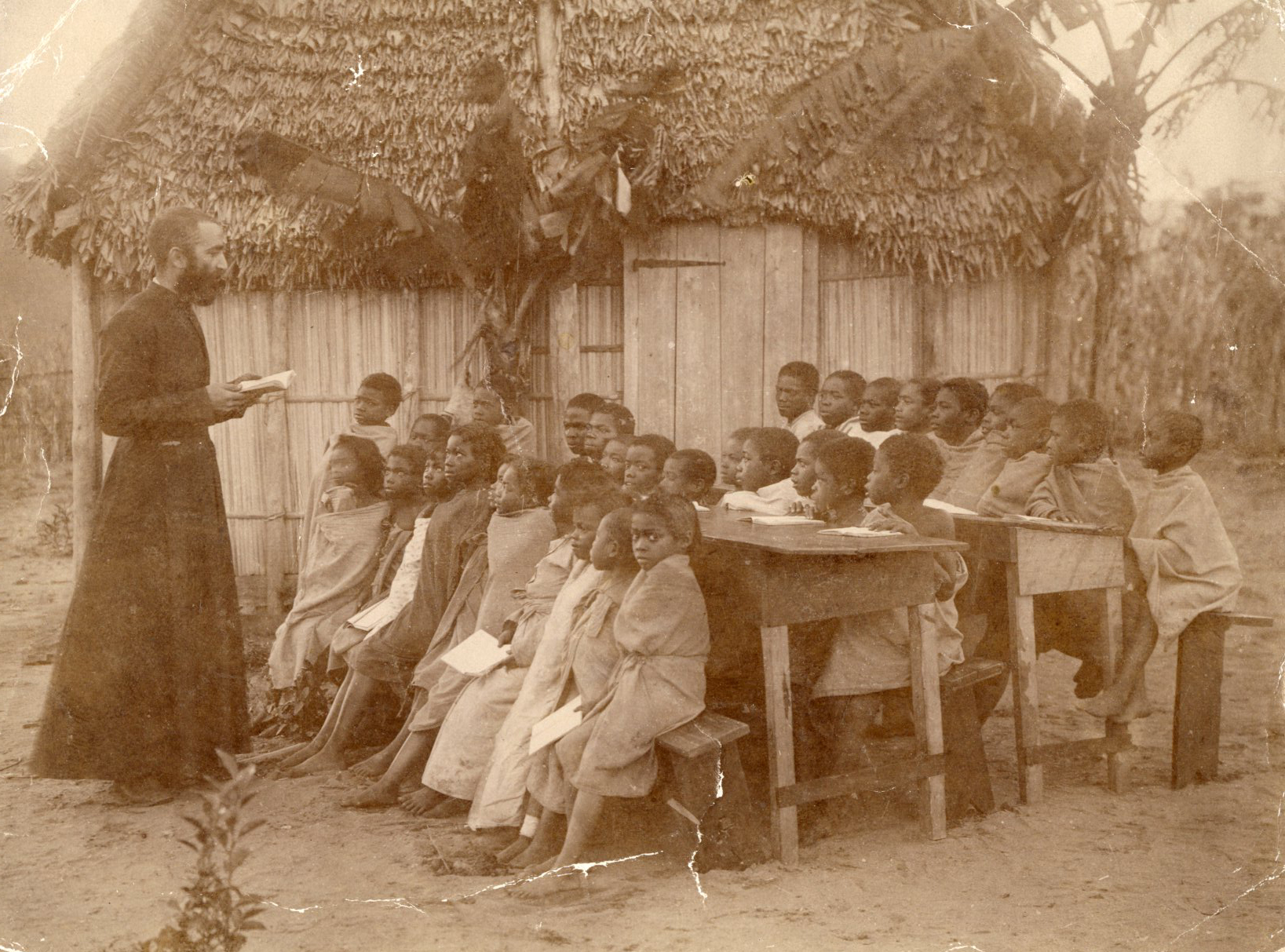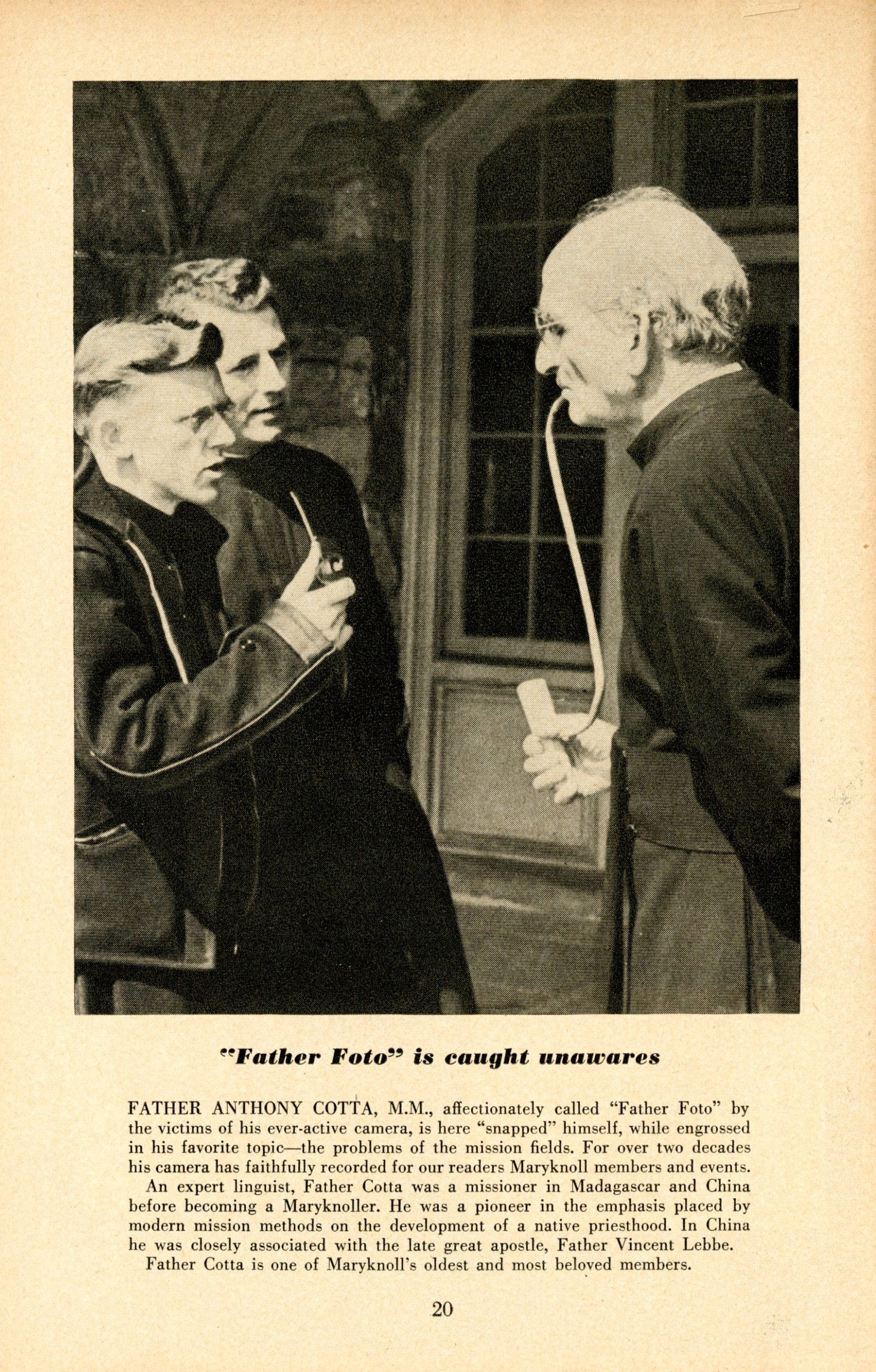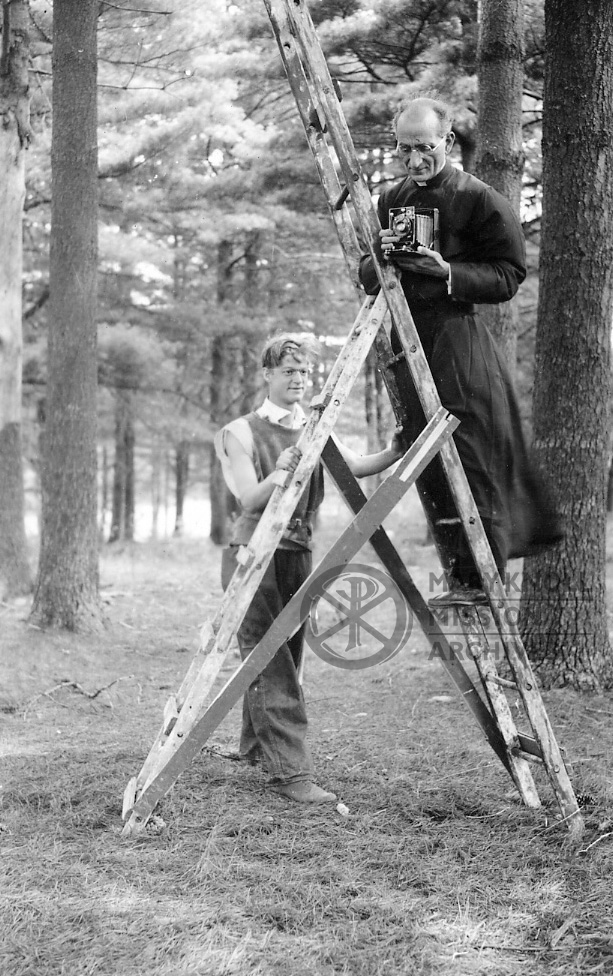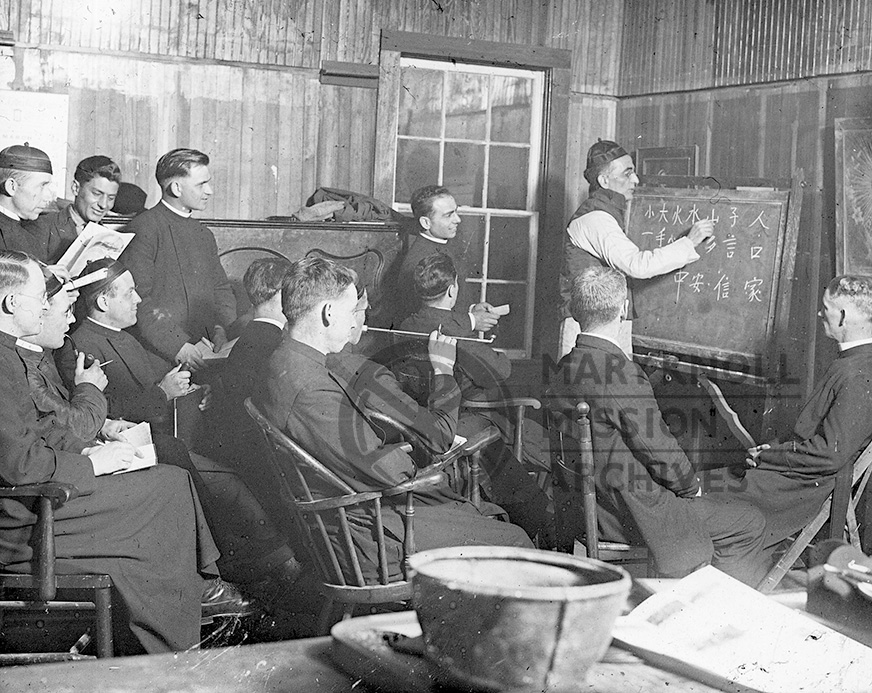The initial spark for this blog post was an image I saw that was taken by Fr. Anthony Cotta, also known fondly as Fr. Foto. It was a trick photograph that he had taken of the Maryknoll Sisters foundress, Mother Mary Joseph Rogers. The image made me smile as I viewed seven Mother Mary Joseph’s all standing in front of or on the balcony of the St. Joseph’s building here at Maryknoll. From there, I wanted to see what other trick photographs I could find by Fr. Cotta and find out more information about him to share with you. The search had begun!
In classic fashion, my deep dive into Fr. Cotta’s life left me swimming in a vast amount of information without knowing where to start. So, before we splash into that, let’s take a look at a few more of Fr. Foto’s trick photographs within our image collection!
In the simplest of terms, trick photography is “photography that uses special methods to make things that are not real appear real.” (Merriam-Webster Dictionary)
Fr. Foto particularly liked the method of trick photography called doubling (or tripling, or quadrupling, etc.) that was very popular during the mid-19th to early 20th centuries. This type of photograph was fairly easy to produce and featured two or more images of a single person or group of people. It could be achieved through many different methods, such as splicing together multiple negatives to show the same person multiple times in a single photograph or double exposure. Please take a look at the slideshow below to see nine of Fr. Foto’s trick photographs, which he so enjoyed creating and upon occasion had himself as the subject!
Click on the photos to enlarge and use the arrows to see each photo
The Field Afar, June 1924, p. 181
“A knowledge of photography is a valuable asset to a missioner, and we are fortunate in having with us Father Foto who not only teaches the art to aspirant apostles, but does much in that line himself. One of Father Foto’s greatest delights is to take a group in several poses, uniting them all in one picture, so as to give the victim the opportunity to ‘see himself as others see him,’ or to take a picture during the evening recreation period without the aid of flashlight. His little tricks of photography are amusing now, but they can be used to good advantage later on, in reproducing for stay-at-homes the life on the missions, as only the camera can show it.”
The Field Afar, January 1931, p.12
“Fr. Foto –
There is no one on our compound who loves the snows of Maryknoll more than Fr. Foto, once nearly sun-struck on the Island of Madagascar.
Fr. Foto has a fund of good nature – with a fringe of hair. His baldness is softened by a held-over tan, which seems to protect him even when he is hatless in a snow-storm.
To Fr. Foto future Maryknollers will be much indebted.
His lens records passing events, and preserves for us the likenesses of distinguished visitors. It catches the compound in all its moods – the fairy winter forest, and the evergreens sparkling with icicles on the campus. It is always ready for the next picture.”
Fr. Cotta, it would seem, lived many lives before he even arrived at Maryknoll as a visiting priest during his leave of absence in 1922 from his assignment to the Vincentian Seminary in Germantown, PA. He was born on January 7, 1872 in Cairo, Egypt. He attended school at St. Joseph’s University in Beirut, Vincentian College of Antoura in Lebanon, and finished his education at the Christian Brothers School in Cairo. He worked as a clerk for two years in the Egyptian Government, before returning to Antoura to continue his studies and traveling to Paris to enter the Seminary of the Vincentian Fathers.
After his ordination on June 4, 1898, he was assigned to Madagascar. He remained there for seven years, through calmer mission times as well as a revolt (see The Field Afar article “Bedrock”), until sickness brought him back to Paris in 1905. In search of a better climate for his condition, Fr. Cotta requested North China as a mission location, where his good friend from the Vincentian Fathers Seminary, Fr. Vincent Lebbe, was also stationed. There his knowledge, appreciation, study, and adoption of the Chinese culture, customs, and language grew and inspired him to join Fr. Lebbe’s apostolate to champion the native clergy (see Maryknoll Magazine article “Missioners extraordinary”). During his time in China he was stationed at Peking (1906-1910) and later Tientsin (1910-1919) and happened to meet Fr. James A. Walsh, who was visiting China on a quest to find a mission field for the Catholic Foreign Mission Society of America (Maryknoll Fathers & Brothers).
While his outspoken support for the consecration of Chinese Bishops did cause him to be transferred, he continued to adovocate for the native clergy to take on a larger role within the church in China. Fr. Cotta’s path eventually led him to Germantown, Pennsylvania, where his chance encounter a few years prior with Fr. James A. Walsh, co-founder of Maryknoll, came into play. As stated earlier, he was given permission to take a year’s leave of absence and decided to come to Maryknoll to teach Chinese. When that year was up, he asked to be released from the Congregation of the Missions to join Maryknoll.
Though quite a distance away, his devotion to the Church in China and what he felt was just, led him to write a highly influential letter, which was later incorporated into Pope Benedict XV’s missionary encyclical “Maximum Illud” in November 1919. The fruits of Fr. Vincent Lebbe and Fr. Anthony Cotta’s labor were finally seen on October 28, 1926 with the consecration of six Chinese bishops. On the day of the consecration, Bishop Philip Chao, representing the six new Chinese bishops, wrote to Fr. Cotta stating, “Behold your desire, conceived so many years ago, today fulfilled. Our consecration is the fruit of your labors and of the sufferings you have endured across the years. During the entire ceremony today, I and the other consecrands kept you in mind before God. I suggested this to our group last evening and all whole-heartedly agreed.
By this letter, I, your truly devoted brother, and all my five fellow Chinese bishops, send you our blessing, one of our very first, with all our hearts’ affection” (Jaegher, The First Chinese Bishops and Father Cotta, p.277). How wonderful to hear these words of thanks and to know that what he had been striving for had come to fruition.
Fr. Cotta became a naturalized citizen of the United States on July 14, 1927 and on September 9, 1930 took the Perpetual Oath to the Catholic Foreign Mission Society of America. “His presence aided greatly in the forming of the seminarians along the lines that would encourage love of the people, sympathy for their customs, understanding of their mentality and a desire to master their language” (Cotta biography, Maryknoll Mission Archives website). He died on April 28, 1957. As stated in the January 1931 The Field Afar article, “Maryknollers will be much indebted” to Fr. Foto. Not only for the images and moments he captured, but for his zeal for the missions, compassion, teaching, curiousity, and dedication.
The Maryknoll Sisters take note of his initial time at Maryknoll:
“Enter Father Cotta
Father Cotta, a visiting missioner, availed himself of an opportunity to ‘snap’ the family. His camera gave him his hobby and he had amused himself with it since his arrival, with some new and very unusual views of the compound. However, he professed himself dissatisfied with his collection until he should have a group picture of the Sisters. He studied the arrangement of his subjects with such mathematical care that he had all quite awed with the gravity of the undertaking. Shot No. 1 he pronounced ‘rotten’ and while all were laughing over that pronouncement, ‘click’ went his camera again. The diarist reported ‘Our title of ‘smiling Sisters’ would certainly be perpetuated if his No. 2 shot is ever given publicity!’”
Maryknoll Distaff 1922, p. 22

